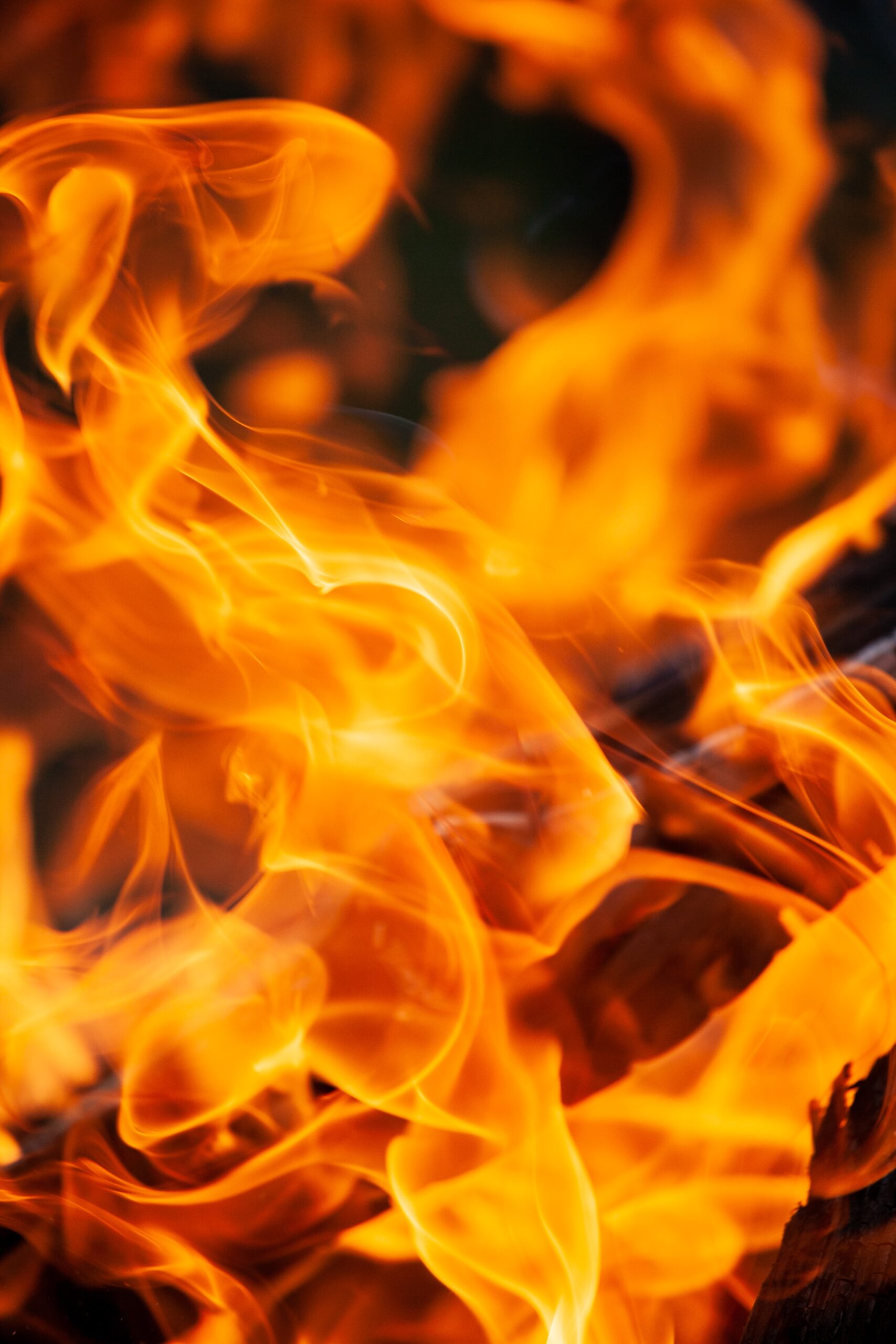As you or your loved ones age, it becomes crucial to prioritize fire safety in order to ensure their well-being. In this comprehensive and detailed article, we will provide you with an essential fire safety checklist specifically designed for seniors. Whether you are a senior yourself, a family member, or a caregiver, this article aims to educate and inform you about the necessary measures that can be taken to minimize the risk of fire accidents. By following this checklist and implementing the suggested precautions, you can create a safer living environment for seniors, granting them peace of mind and security.
Preventing Fires
Fires can be devastating, but with the right precautions, they can be prevented. taking a proactive approach to fire safety is especially important for seniors, as they may be more vulnerable to the dangers of fires. By following these tips, you can create a safer living environment for yourself or your loved ones.
Smoke Alarms
Smoke alarms are a crucial tool in fire prevention. Make sure your home is equipped with smoke alarms on every level and near sleeping areas. It is important to test them regularly to ensure they are functioning properly. Replace batteries annually or whenever the low-battery alert sounds. Smoke alarms have saved countless lives, so never underestimate their importance.
Carbon Monoxide Detectors
Carbon monoxide is a colorless, odorless gas that can be deadly when inhaled. This gas can be emitted from faulty heating systems or appliances, posing a serious threat to seniors. Install carbon monoxide detectors near sleeping areas and have annual inspections of your heating and cooling systems. This simple precaution can safeguard you from this silent killer.
Electrical Outlets
Check your electrical outlets regularly for any signs of damage or fraying. Avoid overloading outlets with too many appliances or devices, as this can increase the risk of an electrical fire. If you notice any issues, such as sparks or blown fuses, contact an electrician immediately to address the problem.
Appliances
Regularly maintain your appliances to prevent malfunctions that could result in a fire. Keep them clean and free of debris, and have them inspected by a professional if needed. Unplug appliances when not in use, and never leave them running overnight or when you are away from home.
Cooking Safety
Cooking is a common cause of household fires, so it’s important to take precautions in the kitchen. Never leave the stove unattended while cooking and keep flammable items, such as dish towels or paper towels, away from the heat. In case of a small grease fire, smother it with a lid or baking soda – never use water, as it can cause the fire to spread.
Candles and Flammable Items
Candles can create a cozy ambiance, but they also pose a fire hazard. Never leave candles unattended and keep them far away from flammable items such as curtains, papers, or decorations. Consider using flameless candles as a safer alternative. Additionally, be mindful of other flammable items in your home, such as cleaning supplies or aerosol cans, and store them properly.
Smoking
If you or someone in your household smokes, it is crucial to exercise caution. Never smoke in bed or when drowsy, as a dropped cigarette can easily start a fire. Use deep, sturdy ashtrays and fully extinguish the cigarette before disposing of it. Better yet, consider quitting smoking altogether for your health and safety.
Heating Safety
As the weather gets colder, it’s important to ensure your heating systems are in good working order. Have your furnace and chimney inspected annually by a professional, and clean any accumulated debris or soot. Space heaters should be kept at least three feet away from flammable materials and turned off when not in use. Never use the oven or stove to heat your home, as this can lead to fire and carbon monoxide poisoning.
Fireplaces and Chimneys
Fireplaces can provide warmth and comfort, but they require regular maintenance to ensure safety. Have your chimney professionally cleaned and inspected annually to remove any creosote buildup, which can ignite and cause a chimney fire. Use a fireplace screen to prevent sparks from flying into the room, and never leave the fire unattended. It’s also crucial to keep flammable objects, such as clothing or furniture, a safe distance away from the fireplace.
Clothes Dryers
Lint buildup in clothes dryers can be a fire hazard, so it’s important to clean the lint trap before and after each use. Additionally, have your dryer vent cleaned regularly to prevent lint accumulation and ensure proper ventilation. Never leave the dryer running when you leave the house or go to bed, as a malfunction could occur and lead to a fire.
Creating a Fire Escape Plan
Having a well-thought-out fire escape plan is essential for everyone, especially seniors. By creating and practicing a plan, you can increase your chances of safely escaping a fire. Here are some steps to help you create a thorough fire escape plan.
Plan and Practice
Take the time to sit down with your household members and discuss the escape plan. Identify the primary and secondary exit routes, and make sure everyone understands them. It is important to practice the plan regularly to ensure that everyone knows what to do in case of a fire. Practicing can simulate real-life scenarios and make the response more automatic, increasing the chances of a safe escape.
Escape Routes
Identify at least two escape routes from every room in your home, if possible. This could include doors, windows, or even emergency exit devices. Have a plan for each room, considering factors such as mobility limitations or potential obstacles. It’s crucial to ensure that these escape routes are unobstructed and easily accessible at all times.
Accessible Exits
If you or someone in your household uses mobility devices, it’s important to ensure that the exits are accessible. Consider wider doorways, ramps, or stair lifts to accommodate any mobility limitations. Install grab bars in key locations, such as near the bed or in the bathroom, to assist with stability and support during an evacuation.
Emergency Contacts
Keep a list of emergency contacts near each phone in your home. This should include the local fire department, police, and any other relevant emergency services. Make sure everyone in your household knows how to dial emergency numbers and understands when to call for help.
Meeting Place
Designate a meeting place outside of your home where everyone can gather after escaping a fire. This should be a safe distance away from the house, such as a neighbor’s house or a specific spot in the neighborhood. By having a pre-determined meeting place, you can easily account for everyone and ensure that no one is left behind.
Assistance Needed
If you or someone in your household requires assistance during an evacuation, it’s important to communicate this to your local fire department. Register with them so that they are aware of any specific needs or vulnerabilities. This information can help emergency responders better assist you in case of a fire.

Fire Safety Measures
Taking proactive measures to enhance fire safety in your home can greatly reduce the risk of a fire starting and spreading. Consider these tips to create a safer living environment for yourself or your loved ones.
Home Layout
When arranging furniture in your home, consider fire safety. Avoid blocking windows or exit routes with large pieces of furniture, as this could hinder your escape in case of a fire. Keep pathways open and clear to provide easy access to exits.
Clearing Clutter
Clutter can impede evacuation during a fire and increase the risk of a fire starting. Keep your living space tidy and free from excessive clutter. Remove any unnecessary items or obstacles that could potentially fuel a fire or hinder your escape. Regularly declutter your home to minimize fire hazards.
Accessible Fire Extinguishers
Ensure that fire extinguishers are readily available in your home. Place them in key locations, such as the kitchen, garage, or near fire-prone areas. Familiarize yourself with how to properly use a fire extinguisher and remember the acronym PASS – Pull the pin, Aim at the base of the fire, Squeeze the handle, and Sweep from side to side.
Fire Safety Equipment Maintenance
regularly maintain your fire safety equipment to ensure its effectiveness. Test smoke alarms, carbon monoxide detectors, and fire extinguishers according to the manufacturer’s instructions. Replace batteries as needed, and replace the equipment if it is damaged or past its recommended lifespan.
Storing Flammable Substances
Take care when storing flammable substances in your home. Keep them in appropriate containers, away from heat sources, and in well-ventilated areas. Store gasoline, paint, and other flammable liquids in approved containers and in a separate, well-ventilated space, away from living areas.
Fire-Resistant Furnishings
Consider using fire-resistant furnishings in your home. Look for items made with fire-resistant materials, such as upholstery, curtains, or bedding. These materials can greatly reduce the spread and intensity of a fire, giving you more time to escape.
Fire Safety Labels
Pay attention to fire safety labels when purchasing new items for your home. Look for products that meet fire safety standards and display appropriate labels. This includes furniture, mattresses, curtains, and other home furnishings. These labels indicate that the product has undergone testing and meet certain safety regulations.
Household Wiring Safety
Faulty wiring can be a major fire hazard, so it’s important to ensure that the electrical wiring in your home is safe and up to code. If you notice any signs of electrical issues, such as flickering lights or outlets that feel warm to the touch, contact a licensed electrician to inspect and repair the wiring.
Outlet and Cord Safety
Inspect your outlets and cords regularly for any signs of damage or wear. Replace frayed or damaged cords immediately, and avoid using extension cords as permanent wiring solutions. Do not overload outlets with too many plugs, as this can increase the risk of an electrical fire.
Safety Steps for Mobility Devices
If you or someone in your household uses mobility devices such as wheelchairs or walkers, ensure that they can be moved quickly and easily in case of a fire. Practice evacuating with the mobility devices to identify any potential obstacles or issues. Make sure pathways are wide enough to accommodate the devices and that doorways are accessible.
Preparing for Emergencies
Being prepared for emergencies, including fires, is crucial for seniors. By taking some preemptive steps, you can ensure that you are ready to face any unexpected situation. Consider these tips to help you prepare for emergencies.
Emergency Numbers
Keep a list of emergency numbers near each phone in your home. This should include the local fire department, police, poison control, and any other relevant emergency services. Make sure everyone in your household knows how to dial emergency numbers and understands when to call for help.
Emergency Kit
Create an emergency kit that contains important supplies to sustain you for at least 72 hours. Include items such as non-perishable food, water, medications, a flashlight, batteries, a first aid kit, and any necessary medical supplies. Keep the kit in an easily accessible location, such as by the front door or in the garage.
Medications and Medical Information
As a senior, it is important to have a list of all your medications and medical conditions readily available. Keep this information in your wallet or purse, and also maintain a copy in your emergency kit. Update the list regularly to ensure accuracy, and include any known allergies or essential medical information.
Emergency Exit Devices
Consider installing emergency exit devices in your home. These devices allow for quick and easy exit in case of a fire or other emergency. They can be installed on doors and windows and provide a secure yet easily accessible escape route. Consult with a professional to determine the best options for your home.
Emergency Notification Systems
Some communities offer emergency notification systems that can provide important updates during a fire or other emergencies. Sign up for these systems to receive alerts and instructions from local authorities. These notifications can help you stay informed and take appropriate action in a timely manner.
Accessibility Considerations
If you have mobility limitations, take additional steps to make your home more accessible during emergencies. This may include installing handrails, ramps, or stair lifts to aid in evacuation. Consider working with a professional to ensure that your home is properly equipped to handle your specific needs.
Pets’ Safety
If you have pets, it’s important to include them in your emergency preparedness plans. Keep pet supplies, such as food, water, medications, and leashes, in your emergency kit. Have a plan for safely evacuating your pets, and consider including them in practice drills. Keep a list of emergency pet-friendly shelters or hotels in case you need to evacuate with your furry friends.
Secure Important Documents
Store important documents, such as identification papers, insurance policies, and medical records, in a fireproof and waterproof safe. These documents are crucial in the aftermath of a fire, so it’s important to protect them from damage. Consider keeping copies of these documents in a separate location, such as a safe deposit box or with a trusted family member.
Communicating with Neighbors
Building a strong relationship with your neighbors can be incredibly beneficial during an emergency. Exchange contact information with neighbors, so you can assist each other if needed. Make a plan to check on each other’s well-being after a fire or other emergencies. By working together, you can provide support and help ensure everyone’s safety.
Safe Practices During a Fire
In the event of a fire, it is crucial to remain calm and follow safe practices to increase your chances of a safe escape. Keep these tips in mind if you find yourself in a fire emergency.
Reacting to Fire Alarms
When a fire alarm sounds, it is important to react quickly. Stay calm and immediately evacuate the premises. Do not waste time gathering belongings or investigating the source of the alarm. Trust that the alarm system is working and focus on getting yourself and others to safety.
Emergency Exits
Use the designated emergency exits and escape routes that you have previously identified and practiced. Do not use elevators, as they may malfunction and trap you. If necessary, crawl low to the ground to avoid smoke, as smoke rises and can make it difficult to breathe.
Crawling Low
If there is smoke in the air, it is best to stay close to the ground where the air is cleaner. Smoke rises, and by crawling low, you can reduce your exposure to harmful gases and increase your chances of breathing in cleaner air. Encourage others to do the same, especially if they have difficulty moving quickly.
Door Safety
Before opening a door during a fire, assess the heat using the back of your hand. If the door feels hot, do not open it, as that could indicate that there is fire behind it. Instead, find an alternative exit or stay in the room and seal the door with towels or sheets to prevent smoke from entering. If the door is cool, open it slowly and be prepared to close it quickly if you encounter smoke or flames.
Calling for Help
Once you are safely outside, call 911 or the designated emergency number. Provide them with your location and any additional information about the fire, such as its location or any known individuals who may still be inside. Stay on the line until the operator advises you to hang up.
Using Fire Extinguishers
If you have been trained in the use of fire extinguishers and it is safe to do so, you can attempt to extinguish a small fire. Remember the acronym PASS – Pull the pin, Aim at the base of the fire, Squeeze the handle, and Sweep from side to side. However, always prioritize your safety and evacuation over attempting to fight the fire.
Stop, Drop, and Roll
If your clothing catches fire, remember to stop, drop to the ground, and roll to extinguish the flames. Cover your face with your hands to protect it while rolling. This technique can help to smother the fire and minimize burns.
Creating a Barrier
If you encounter a closed door that you believe leads to safety, use a towel or piece of clothing to block the gap between the door and the floor. This can help prevent smoke from entering the room and buy you more time to escape.
Assisting Others
If you encounter someone who needs assistance during a fire, prioritize your own safety first. If it is safe to do so, help them evacuate using your identified escape routes. If you are unable to assist them physically, provide clear instructions on how to evacuate or seek assistance from neighbors or emergency responders.
Leaving Personal Belongings
During a fire emergency, your safety is the top priority. Do not attempt to gather personal belongings or valuables as you evacuate. Focus on getting yourself to safety and leave everything else behind. Remember that material possessions can be replaced, but your life cannot.
Additional Safety Tips
In addition to the previously mentioned fire safety measures and practices, consider implementing these additional safety tips to further protect yourself or your loved ones.
Fireproof Mattress and Bedding
Consider investing in a fireproof mattress and bedding to reduce the risk of fire-related injuries. These products are designed to resist ignition and slow down the spread of flames, giving you more time to escape.
Water Temperature
Seniors are particularly vulnerable to burns from hot water. Set your water heater to a temperature no higher than 120 degrees Fahrenheit to prevent scalds. Always test the water with your hand or a reliable thermometer before stepping into the shower or bath.
Fire Safety Training
Consider attending fire safety training courses specifically designed for seniors. These courses can provide valuable information on how to prevent fires, safely evacuate in case of emergencies, and minimize fire-related injuries. Contact your local fire department or community organizations to inquire about available training programs.
Regular Maintenance
Regular maintenance of your home’s fire safety equipment and systems is crucial to keeping them in optimal condition. Schedule annual inspections of your smoke alarms, carbon monoxide detectors, fire extinguishers, and heating systems. Additionally, keep up with routine maintenance tasks, such as cleaning out dryer vents and replacing worn-out cords or outlets.
Access to Emergency Services
Ensure that you have easy access to emergency services, such as a phone or personal emergency response system. Keep a charged mobile phone nearby or consider investing in a wearable alert device that can connect you with emergency services at the press of a button. These devices can provide peace of mind and quick access to help if needed.
Annual Fire Safety Assessments
Consider conducting annual fire safety assessments of your living space. Look for potential fire hazards, such as overloaded electrical outlets, frayed cords, or cluttered areas. Address any issues promptly to minimize the risk of a fire starting or spreading.
Teaching Grandchildren about Fire Safety
If you have grandchildren who visit your home, take the opportunity to teach them about fire safety. Educate them on the importance of not playing with matches or lighters and how to react in case of a fire. Encourage them to ask questions and involve them in fire drills or safety exercises.
Fire Safety for Wheelchairs and Walkers
If you use a wheelchair or walker, take additional fire safety precautions to ensure your mobility devices do not impede your ability to evacuate. Keep pathways clear and free from clutter, and practice using the emergency exits with your mobility device. Consider installing smoke alarms that are specifically designed for the hearing-impaired or individuals with visual impairments.
Preventing Scalds and Burns
Take steps to prevent scalds and burns in your home. Use oven mitts or hot pads when handling hot cookware, and never leave pots or pans unattended on the stove. Install anti-scald devices on faucets and showerheads to regulate water temperature and prevent accidental burns.
Fire Safety Education for Caregivers
If you are a caregiver for a senior, it is important to be educated in fire safety. Ensure that you are aware of the specific needs and vulnerabilities of the individual you are caring for, including any mobility limitations or medical conditions. Develop a personalized fire escape plan and regularly review it with the person in your care. Stay informed about their medications and medical conditions, and keep emergency contacts readily available.

Conclusion
Fire safety is a crucial consideration for seniors, as they may be at a higher risk of fire-related incidents. By implementing preventive measures, creating a fire escape plan, and staying prepared for emergencies, you can greatly reduce the risk of a fire and increase your chances of a safe evacuation. Remember to regularly maintain your fire safety equipment, practice fire drills, and educate yourself and others on fire safety best practices. Stay vigilant and prioritize your safety, knowing that by taking these steps, you are creating a safer living environment for yourself or your loved ones.



